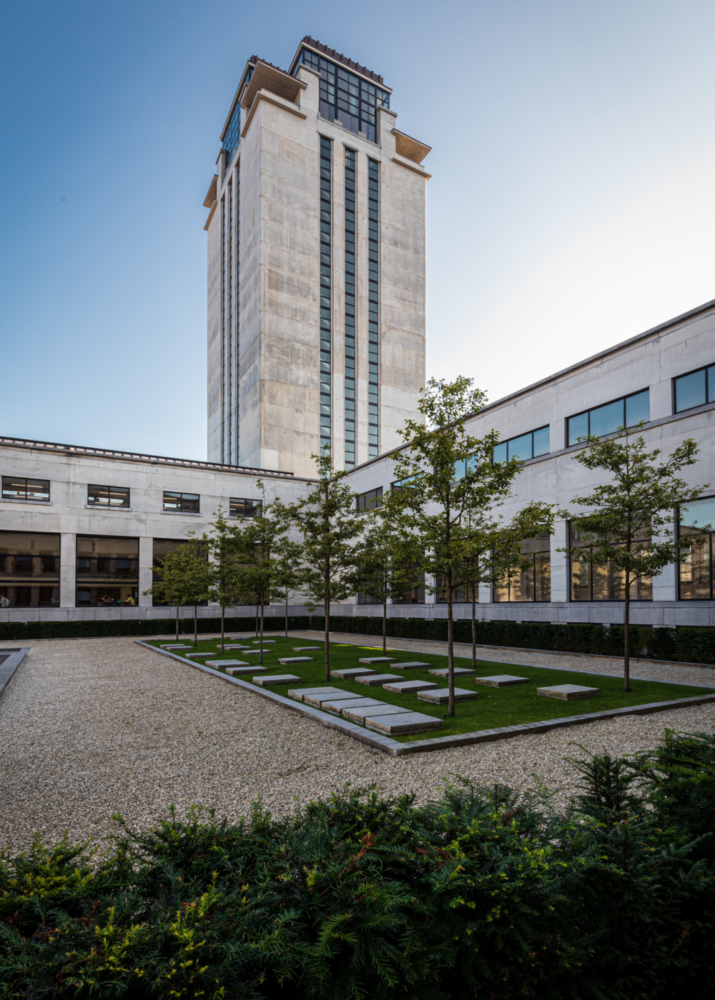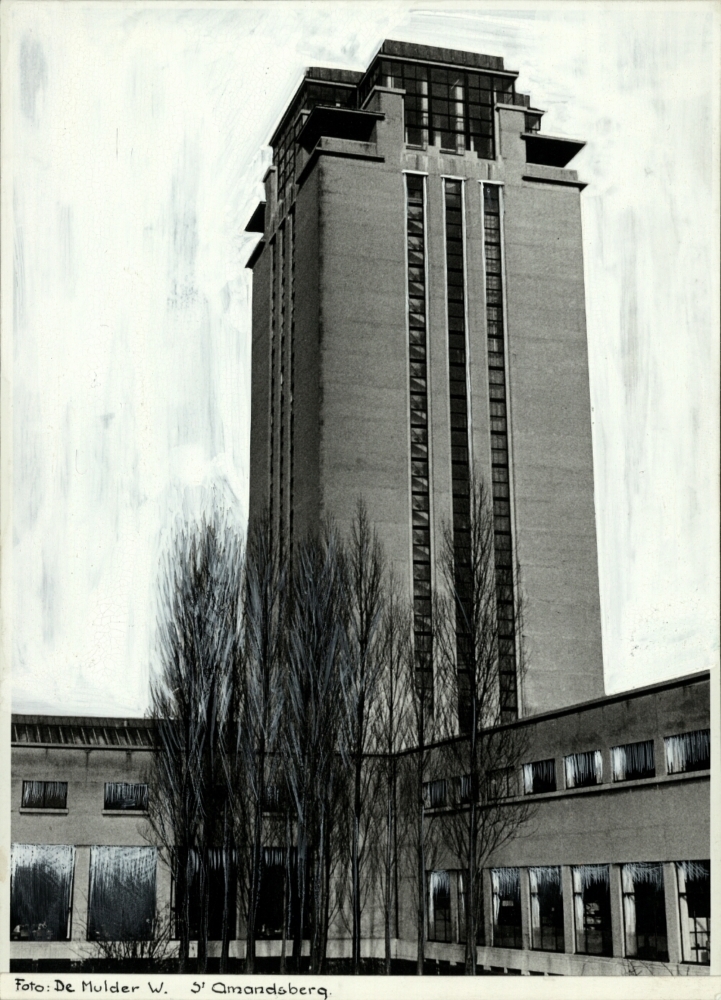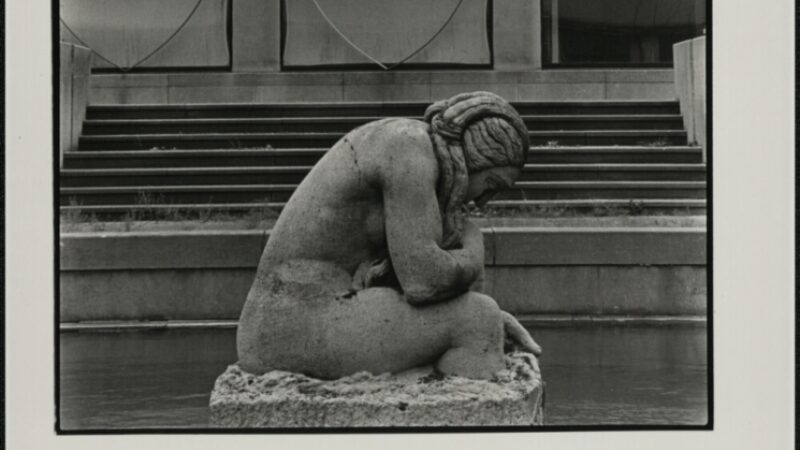
By Geert Roels, 2021, license CC-BY-NC-SA-4.0
Modernist Ornament
A place where collections are stored and people come to study requires tranquillity. That is provided by the Quiet Garden, which is visible from every corner of the Boekentoren.

By Geert Roels, 2021, license CC-BY-NC-SA-4.0
A courtyard garden separates the Boekentoren from the Faculty of Arts and Philosophy. The ‘Blandijn’ was built around 1960 by Eugène Delatte, an assistant of van de Velde.
The Quiet Garden stands out because of Karel Aubroeck’s De Runenleesster (‘The Rune Reader’, 1950), its modernist ornamentation and the geometry of the water basin, which is a reflection of the Belvedere. But even more striking is what is located under the Quiet Garden: an Underground Depot.
The Quiet Garden cannot be entered. In the Study Area and Reading Room for Journals, the calming verdant view through the large windows contributes to the pleasant ambience. From its terrace with an awning, the Hall Henry van de Velde, enjoys a magnificent vista of the Quiet Garden.


